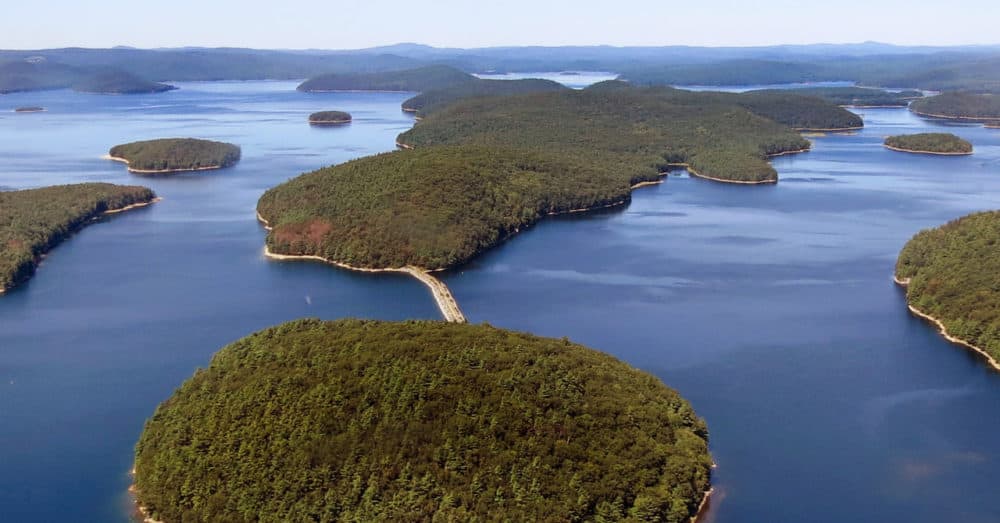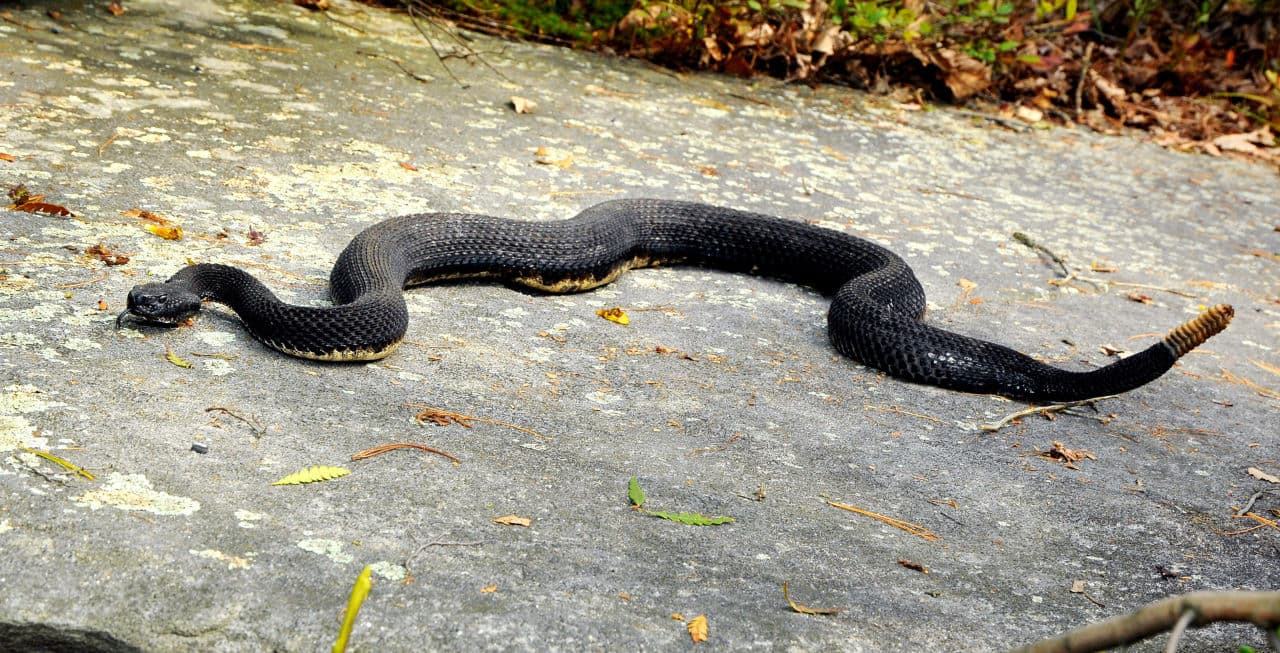Advertisement
Rattlesnake Island: Mass. Officials Want To Create Protected Habitat For Snakes

You'd have to try really hard to get bitten by a rattlesnake in Massachusetts.
“We’re talking such low probabilities, it’s like getting struck by lightning while holding an ice cream cone in both hands,” said Tom French, assistant director of the state's Division of Fisheries and Wildlife.
Alongside other state wildlife officials, French made his argument about the rarity of snake bites many times over a couple of hours to a crowd of about 200 people in a packed high school auditorium in this western Massachusetts town on Tuesday. They’d come to hear the state’s plan to revive the endangered population of timber rattlesnakes, a native species to Massachusetts that has dwindled to about 200 across the state.
“We really need to have a safety net, and we’re looking for one place in the state and only one, where we can protect snakes from people,” he said.
That place, French said, is Mt. Zion Island — a three-and-a-half mile long piece of land in the middle of the Quabbin Reservoir that is off-limits to visitors. The state wants to move young snakes to the abandoned island — one or two a year — starting in spring 2017.

French said while rattlesnakes can swim, they almost always stay close to their hibernation spots and have no reason to seek out humans. Moreover, he said these snakes already live wild in public parks across the state.
And yet -- “we haven’t had, at least in the past 50 years, an accidental bite anywhere in the state, with six million people,” French said.
But many remain unconvinced.
“And it’s inevitable that somebody’s gonna be bit by a snake," said Mike Krunkelvich, who hunts and hikes in the Quabbin area. “And that is going to be the end of my use of the watershed. They’ll close it down.”
And some — like Irene Butler — just really don’t like snakes.
“I’m not happy having poisonous snakes put in, because I live close enough to it, within a day’s time, one of those snakes could appear in my backyard,” she said.

But the audience also included a number of people in favor of saving the snakes, who were not worried about the tiny risk of a snake encounter. Robert Paquet, of Petersham, defended the wildlife officials.
“This agency is responsible for endangered species,” Paquet said. “That’s their mission. That’s what they’re gonna do, and they’re just going about and doing it.”
The meeting did get tense at times, like when one man asked whether the public will have a say in whether the plan goes ahead.
“Do we make any difference in the outcome?” he asked.
“Well, it’s not based on popularity, no,” French replied.
French said he’d need to hear a compelling scientific reason against the plan in order to scuttle it — and at the moment, that’s unlikely.
His agency is planning to start breeding a few baby snakes at a zoo in Rhode Island for a year or so before moving them to the Quabbin. If all goes well for the snake population — and French says that’s a big if — he’s hoping to see about 35 new timber rattlesnakes in about a decade.
This article was originally published on February 24, 2016.
This segment aired on February 24, 2016.